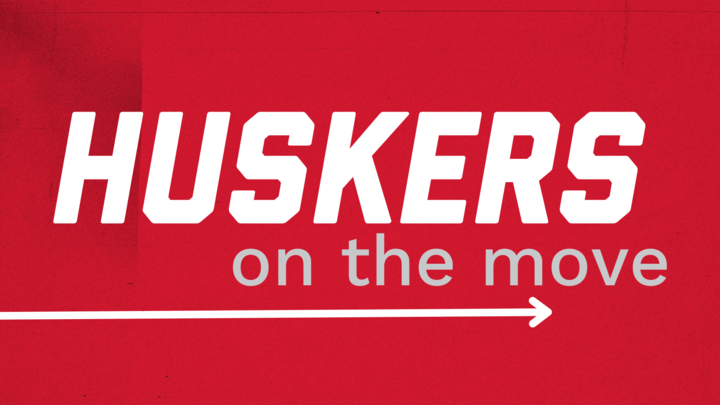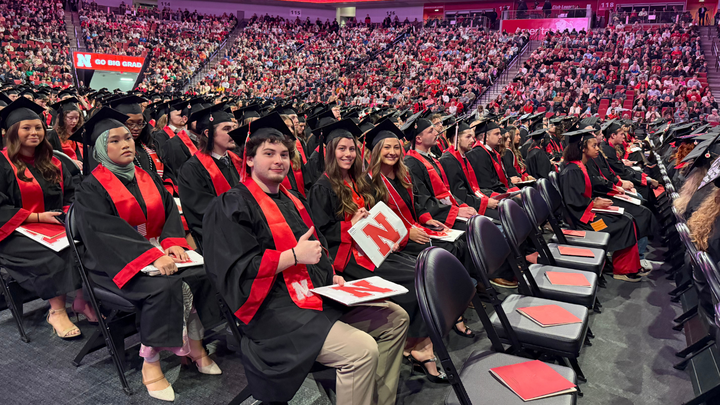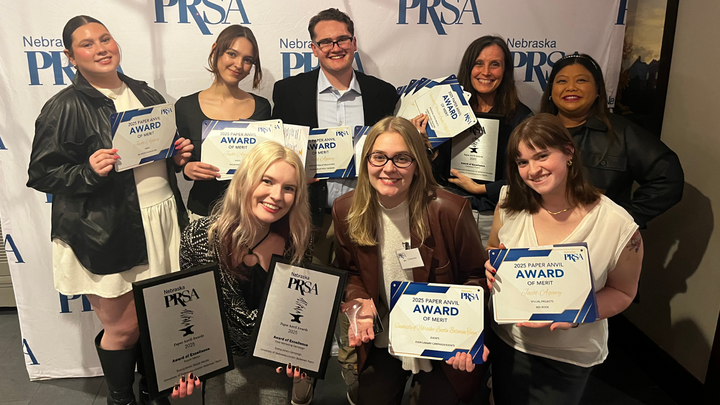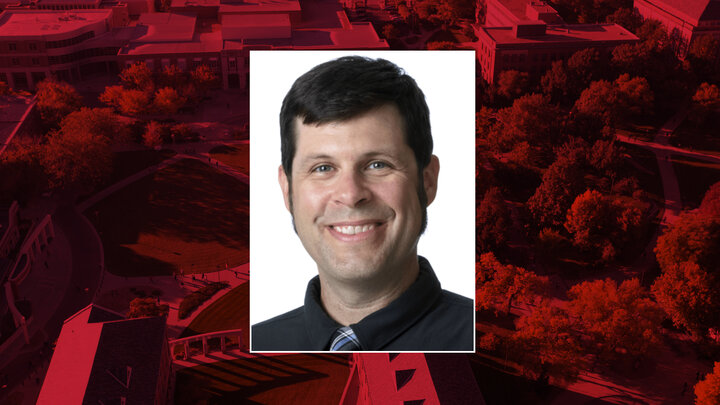Overview
In response to a request from Executive Vice Chancellor Ankerson, the College of Journalism and Mass Communications conducted an assessment of recruitment and retention efforts impacting fall 2022 enrollment figures as reported in the University Census.
The college’s recruitment efforts resulted in a university-leading increase in both incoming freshman and transfer students. Recent activities have focused on increasing the college’s exposure to students with a demonstrated interest in our disciplines. By shifting resources from traditional recruitment events led by the Office of Admissions toward college-sponsored events, we were able to target prospective students more precisely.
Graduate student recruitment was not as successful as undergraduate recruitment and the college’s incoming graduate students declined. The decline was influenced by changing leadership and the loss of support staff, which lead to stalled recruitment efforts.
Moving forward the college will build upon its successes in undergraduate recruitment and relaunch targeted efforts to recruit graduate students.
The college continues to lead the university in graduation and retention rates of undergraduate students. Recently, the college launched programs aimed at building community among students, offering innovative academic programs and streamlining degree requirements.
Despite our retention success, the college’s junior and senior populations have declined. This decline was driven by small incoming class sizes during COVID and a decline in internal transfer students from other UNL units.
At the graduate level, data is not available to gauge if the decline in returning students is driven by record high graduation numbers or by a failure to retain students.
This report details the college’s enrollment figures for fall 2022 and the factors influencing the college’s experience.
Retention
Incoming Freshmen
The College of Journalism and Mass Communications led the university in growth in incoming freshmen with a 16.3% increase over fall 2021 (146 to 171).
Growth was driven by both residents, 4.4% increase, and non-resident students, 35.1% increase. Three of the college’s four undergraduate academic programs grew, advertising and public relations (20%), broadcasting (37.5%) and sports media and communication (19.3%). Only one program, journalism declined (-18.9%).
The most significant shift in recruiting activities for the college was the reallocation of college resources away from Admissions-organized events toward college-sponsored activities which provided access to a greater number of prospective students for our programs.
Traditionally, the admissions events calendar has dominated the schedule of our recruiting staff. However, we have found that as a small college the number of prospective students interested in our unit at these university-wide events is very small – perhaps 1-2 per event. Additionally, our college’s visibility at these events is often limited as primary placement is provided to larger units.
To make more efficient use of our resources, the college significantly increased the use of student ambassadors to staff Admissions-organized events relieving college recruiting staff and faculty, who could then focus their efforts on more targeted activities. Making use of this time the college launched, relaunched or expanded a number of activities.
The college relaunched its a la carte workshop program, which provides faculty-led workshops to high schools throughout Nebraska. In 2020-2021, the college completed 44 workshops at high schools throughout the state. These workshops have been very successful at increasing the visibility of our college to student populations enrolled in journalism and communication-related programs while in high school.
The college also launched a series of events, CoJMC Connections, which target students with an interest in journalism and communications and their parents and provide opportunities for students to learn about the college and interact with faculty and current students. The college held four CoJMC Connections events in spring 2022. The events were offered on-campus in college facilities and online to ensure out-of-state students who cannot travel to Lincoln could attend. These more targeted events have seen greater participation by students than admissions-led events.
The college also worked with Admissions marketing staff to participate in a targeted social media campaign. The results, as reported by Admissions, were very positive and increased the visibility of our programs.
The college added some additional partnerships aimed at attracting diverse students including a partnership with the Boys & Girls Club and the Nebraska College Preparatory Academy. These partnerships launched in the spring and summer of 2022. They did not impact our diversity recruitment figures for fall 2022, but we believe we will see an impact in future years.
Transfer Students
Overall, the university’s transfer student population increased in 2022. Therefore, it is likely that growth in transfer students was driven by factors beyond the college. However, a few factors may have resulted in the university-leading growth experienced by the college. The college’s transfer students increased 114.3%, from 14 to 30, in fall 2022.
In fall 2021, the college revamped its transfer student webpage to provide prospective students with information tailored to this unique population. We also evaluated and streamlined our transfer student visit and communication experiences to ensure the integration of our academic advising team who provide detailed information unique to the individual student’s circumstances easing their transition to the University.
In fall 2021, the Scholarship and Student Success Committee identified a need to award college scholarships to transfer students. Since we know transfer students wait longer to apply, the committee held back $4,000 to award to two incoming transfer students, one in the fall and one in the spring.
Graduate Students
The college saw a significant decline in incoming graduate students, dropping 36% from 25 incoming students to 16 in fall 2022.
The college’s graduate programs have suffered from a lack of consistency in leadership. Over the past ten years, the college has had six different graduate chairs.
Periods of enrollment growth in the graduate program have followed targeted recruitment campaigns undertaken by Amy Struthers in 2016-2017 and Jemalyn Griffin in 2019-2020. For the past two years, the college has not engaged in a proactive recruiting campaign for graduate students.
Additionally, the college expected growth in our certificate students following the launch of a graduate certificate in 2020 in partnership with the College of Business. Unfortunately, the certificate has failed to garner significant student interest with enrollment remaining between 1 and 3.
Lastly, the college lost its graduate student services coordinator in May 2022. The position has traditionally responded to graduate student inquiries and facilitated the graduate application process for prospective students. The loss of this position approximately three months prior to the fall 2022 application deadline disrupted the final steps in the recruitment funnel for incoming graduate students.
One graduate program, the public relations and social media graduate certificate, did see growth in fall 2022. This growth was driven by online Nebraska graduate students from non-metropolitan markets. A more targeted focus on promoting graduate certificates to rural learners could result in increased growth in this program.
Recruitment Plans
Undergraduate Enrollment
To increase the college’s incoming freshmen, we will build upon our successes in undergraduate recruitment and launch a new program aimed at increasing the diversity of our incoming freshmen, which is an area of concern for the college.
We will continue to shift our resources toward college-organized activities by continuing to expand our a la carte workshop program. In addition to expanding our program to additional Nebraska schools, we plan to travel to Minneapolis, Chicago and Kansas City this fall to offer workshops at feeder high schools in these target markets.
We will also expand our CoJMC Connections events to provide more in-person and virtual college interactions with prospective students and their parents.
To target diverse students, the college is launching The Bay Experience in partnership with Bay High in Lincoln. This afterschool program will provide Bay High students with an afterschool program where they can gain hands-on experience in media production while earning college credit. Through the program, we will also offer enhanced support to this diverse student population to navigate the college admissions process.
Graduate Enrollment
This fall the college will work with our student-run advertising agency, Jacht Agency, to launch a social and digital media marketing campaign to promote our graduate programs, particularly our integrated media and communications masters’ specialization and our public relations and social media graduate certificate.
The college will also evaluate the viability of continuing the financial communications certificate. While we value our partnership with the College of Business, our resources may be more appropriately directed elsewhere.
Lastly, we plan to launch a graduate certificate in sports media and communications. Two of the courses in the proposed certificate are being offered in the fall of 2022 with strong enrollment in both, indicating student interest in this subject.
Retention
Undergraduate Students
Sophomore student enrollment increased in fall 2022, but junior and senior enrollments declined. A number of factors influenced the decline in our junior and senior populations.
The college currently has the highest first-year, second-year and third-year retention rates on campus. This indicates that we do a good job of retaining students at UNL.
In 2019, we launched a peer mentor program that was expanded in fall of 2020 and 2021. The program pairs incoming freshmen with upper-class students to provide mentoring and build community with the college. The program has received positive reviews from both mentors and mentees.
In the fall and spring of 2021-2022, the college piloted a mid-term grade reporting project in core required courses. The project alerted our academic advising team of students who were falling behind early in the semester and our advisors conducted proactive outreach to connect those students to college and campus resources. The program received positive feedback and will be expanded this year.
The college also successfully implemented activities to support the University’s student success metrics. 99.1 % of our faculty provided Canvas feedback by the fourth week in the fall and 94.7% in the spring. 93.% of our freshmen had an advising appointment during the spring of 2022.
The college added an advising line in 2021, leading to more individualized attention for every student. CoJMC advisors are trained to look beyond the next semester and focus on the student’s individual graduation plan in every meeting, so they understand how decisions now could affect their graduation timeline.
In 2021-2022, the college made several changes to its curriculum which will provide students with enhanced learning opportunities and make it easier for students to understand the requirements for graduation. In fall 2021, we launched The Experience Lab, where all CoJMC majors will work with professionals-in-residence for three semesters in one of the college’s media outlets or agencies. We also introduced a new requirement that all CoJMC students complete a Social Justice and the Media course. These experiences create more opportunities to learn from industry professionals and have a better understanding of diversity in the context of media, which helps with student recruitment and success efforts on campus.
These factors led to the increases we are experiencing in our other freshmen and sophomore classes.
But if our retention figures are high, why are the college’s junior and senior populations down?
The college’s incoming freshmen class sizes were down in 2019-2020 and 2020-2021 due to the impact of COVID -19 on university enrollment. Students enrolling in these years would now be juniors and seniors. These smaller class sizes come after several years of record high incoming freshmen enrollments in the college. Their smaller starting numbers are a factor in the declining junior and senior populations we are now experiencing.
The number of students who started in CoJMC who leave the college and/or university has not increased. In 2020, 166 of our upper-class students had transferred out of the college or university. That number is flat in 2022 at 166. With the smaller starting figures and flat departures, our populations have decreased.
The college has traditionally benefited from internal transfer students from other UNL colleges who transfer in after their initial enrollment. In the fall of 2020, 365 CoJMC sophomores, juniors and seniors had transferred into the college from another UNL unit, while only 166 had transferred to another college or left the university resulting in a net transfer of 199 students. Although still positive, the college’s net transfer of students declined in 2021 to 139, and again in 2022 to 109 students.
The most significant drop was in internal transfers from the College of Business. In fall 2020, 109 CoJMC sophomore, junior and senior students transferred from the College of Business. In fall 2022, that figure dropped to 61. Like the CoJMC, the College of Business had smaller incoming freshmen classes during COVID and did not dismiss students who would then need to identify another program of study. Therefore, the pool of potential internal transfers from the College of Business was also smaller.
The declining number of internal transfers is a large factor in our junior and senior class sizes.
Some students did not return to the college in fall of 2022. Data and advising notes provide some insight into these students. 63 students who were enrolled in spring 2022, failed to register for courses in fall 2022. Of those 63, 58% (37 students) have a student account hold.
Academic Advising notes indicate that an additional 10 students enrolled for fall 2022 but did not return.
Advising notes also tell us that the most common reasons students did not return in fall (except for holds) were transfers who wanted to be closer to home (9), medical withdrawals (9) and career opportunities such as full-time jobs, the College Disney program and military service (6).
Graduate Students
The college is skeptical of the graduate student numbers presented in University Census data reports. The college offers an 8-week program structure which means that some students may not be enrolled until the second 8-week session and therefore, not included in census figures.
Additionally, understanding how graduate students are counted at the University has always been and remains challenging. As a result of a lack of quality university-level data, the college has developed its own internal tracking system which indicates that our graduate student numbers may be higher than reported. Internal tracking indicates the college has between 70-80 master's and 35-40 certificate students.
It is difficult given currently available data to determine if our graduate students are not being retained or if they are graduating from the program. Our graduate degrees conferred increased dramatically in 2019-2020, from between 15-20 per year prior to 19-20 to 40+ after.
Record graduation numbers lead us to believe that efforts in recent years to streamline our curriculum and provide professional advising support, in addition to faculty advising, have shortened the time to degree for our graduate students and improved their overall experience.



